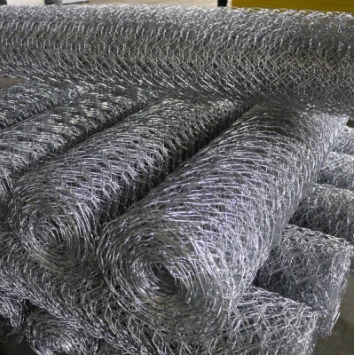tying barbed wire to post
How to Effectively Tie Barbed Wire to a Fence Post
Barbed wire is a popular choice for fencing due to its durability and ability to deter intruders, whether they are animals or unwanted trespassers. One essential skill in constructing or maintaining a barbed wire fence is the proper technique to tie barbed wire to a fence post. This task, while seemingly simple, requires attention to detail to ensure safety and maximized fence integrity. In this article, we will discuss step-by-step guidance on how to effectively tie barbed wire to a post.
Tools Required
Before starting the process, it is vital to gather the necessary tools and materials. You will need
1. Barbed wire 2. Fence posts (wooden or metal) 3. Wire cutters or pliers 4. A tensioning tool (optional but recommended for tighter fence) 5. Protective gloves (essential for safety due to the sharp barbs)
Step-by-Step Guide
Step 1 Preparing the Post and Wire
Begin by selecting a sturdy fence post that is appropriately spaced according to your fencing needs. Ensure that the post is firmly set in the ground, which is crucial for maintaining tension in the wire. Once your post is in place, take the roll of barbed wire and unroll a sufficient length. It’s better to have more wire than necessary, as it can always be trimmed later.
Step 2 Attaching the Wire to the Post
Hold the end of the barbed wire against the post, approximately six inches above the ground. This height depends on what you are trying to contain or keep out (for example, livestock or wildlife). Wrap the wire around the post 2-3 times. Ensure that you keep the wire taut but not overly tight to avoid damage to the wire and make the installation easier.
Step 3 Securing the Wire
tying barbed wire to post

After wrapping the wire around the post, you need to secure it in place. Use wire cutters or pliers to cut the wire, leaving enough length to create a secure knot. Next, take the cut end of the wire and fold it over the wrapped section. Pull it tightly so it presses against the wrapped section of the wire, which helps in locking it in place.
Step 4 Creating a Knot
To create a secure knot, wrap the free end of the wire several times around the wrapped section. The number of wraps will depend on the gauge of the wire and how tightly it holds. A general rule of thumb is to wrap it about four to six times. After wrapping, use the wire cutter to trim any excess, and use pliers to twist the end tightly to ensure it doesn’t loosen over time.
Step 5 Applying Tension
The tension on the barbed wire is essential for its effectiveness. If using a tensioning tool, attach it to one end of the wire and pull it taut while securing the other end at the next post. If not using a tensioning tool, simply pull the wire firm while tying it, making sure it is straight and level along the line of the posts.
Step 6 Final Secure and Finish
Once the barbed wire is pulled tight and securely tied to the post, make sure to double-check the knot and the overall tension of the wire. If you notice any slack, readjust as necessary. For additional security and safety, ensure that the windings are neat and that barbs are positioned to point outwards, discouraging climbing over or squeezing through.
Safety Considerations
While tying barbed wire, always wear protective gloves and long sleeves to prevent cuts and scrapes from the sharp barbs. Furthermore, be cautious of the surroundings and ensure that no one is nearby while you work.
Conclusion
Tying barbed wire to a fence post is a critical skill in fencing that, when done correctly, ensures a strong and effective barrier. With practice and attention to detail, you can secure a barbed wire fence that can withstand the test of time, protecting your property and livestock effectively. Remember to regularly check the fence for any signs of wear or slack and maintain it to ensure its longevity.
-
Space-Saving Chain Fence Hacks Vertical Gardening with Cyclone MeshNewsJul.16,2025
-
Innovations in Iron Nail Wire Production for Modern ConstructionNewsJul.16,2025
-
Creative Uses of Wire Netting Fence in Modern Landscape DesignNewsJul.16,2025
-
Barbed Wire Fence Innovations in Anti-Climb TechnologyNewsJul.16,2025
-
Architectural Uses of Umbrella Nails for Aesthetic Roof DesignsNewsJul.16,2025
-
Architectural Uses of Razor Barbed Wire in Secure Urban DesignNewsJul.16,2025




